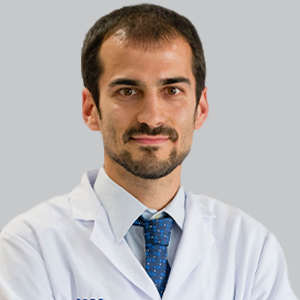News
Article
Expanding the Clinical Care of Friedreich Ataxia Through Omaveloxlone and SKYCLARYS PASS Registry
Author(s):
Key Takeaways
- Omaveloxolone, an Nrf2 inhibitor, is the first FDA-approved treatment for Friedreich ataxia, demonstrating efficacy in the MOXIe Part 2 trial.
- Long-term safety data show omaveloxolone is well-tolerated, with manageable gastrointestinal side effects and transient transaminase changes.
David Lynch, MD, PhD, a professor of neurology at the University of Pennsylvania Perelman School of Medicine, discussed the significance of a number of recently presented analyses highlighting omaveloxlone, the first approved therapy for Friedreich ataxia.
David Lynch, MD, PhD

Friedreich ataxia (FA) is a rare, inherited neurodegenerative disorder caused by mutations in the FXN gene, leading to a reduced production of frataxin, a protein critical for mitochondrial function. While there is no cure for FA, treatment has traditionally focused on managing symptoms, improving quality of life, and addressing complications. In early 2023, the FDA approved omaveloxolone (Skyclarys), an Nrf2 inhibitor, as the first and only marketed treatment specific to treating FA.
Most of the basis behind omaveloxolone’s approval was from the phase 2 MOXIe Part 2 trial (NCT02255435), a double-blind, placebo-controlled trial in which the agent met its primary end point, demonstrating statistically significant differences in modified Friedreich Ataxia Rating Scale (mFARS) scores over a 48-week period vs placebo (–2.41 points; P = .0138). More recently, at the International Congress at Ataxia Research, held November 12-15, 2024, in London, Biogen presented several new analyses highlighting omaveloxolone in the treatment of FA.1,2
These included long-term safety data from the supportive study, as well as findings highlighting the treatment’s efficacy across various age groups. David Lynch, MD, PhD, principal investigator of the MOXIe trials, sat down to discuss the data presented, and the significance behind the expanded knowledge of omaveloxolone’s treatment profile. In the discussion, Lynch gave context on the safety findings, as well as expectations and considerations clinicians should have with the therapy. In addition, he spoke on a newly initiated registry dubbed SKYCLARYS PASS (NCT06623890), that will collect long-term safety and patient experience data related to the drug. Lynch, a professor of neurology at the University of Pennsylvania Perelman School of Medicine, also spoke on the greater understanding of omaveloxolone’s use, as well as the need for more real-world data in FA.
NeurologyLive: Give an overview of the presentations from ICAR on omaveloxolone?
David Lynch, MD, PhD: This looked at all the long-term safety issues in the clinical trial, as well as part of its extension. The short story is that overall, when you compare it to a lot of drugs, omaveloxolone is pretty safe and tolerable. There aren’t a lot of concerning issues beyond the upfront gastrointestinal side effects in 10–15% of people, some headaches, and changes in hepatic transaminase levels. These transaminase changes, though, tend to go away and aren’t accompanied by any abnormalities in liver function, so it seems more like a metabolic effect than a toxic one.
The most impressive thing is that everything we found in the original clinical trial is still consistent—nothing new is popping up. Usually, when you broaden the group that receives a drug, or extend its use, you start seeing new things emerge. That doesn’t seem to be the case here. There might be a few minor findings, but nothing significant. Overall, it’s a pretty well-tolerated drug with a modest number of safety issues, especially considering its mechanism as a transcription factor activator influencing DNA activity.
From a clinician treating perspective, are there any ways clinicians can avoid/temper some of the gastrointestinal adverse events seen?
Yes, speaking mainly about our practice—something we also presented at the ICAR meeting—we’ve treated more than 250 patients clinically since the drug was released. In most individuals, the GI side effects, like nausea and diarrhea, resolve within the first one to two months. For those who struggle, we’ve had success by starting with a lower dose and gradually increasing it, rather than jumping straight to 150 mg (three pills) right away. By slowly inching up over two, four, or even six months, most patients can eventually tolerate the full dose.
The same principle applies to elevated transaminases. There were a few patients in the trial who had to stop because their levels got too high, but in clinical practice, we’ve managed to treat similar patients by increasing the dose very slowly. These transaminase elevations aren’t associated with abnormalities in albumin or bilirubin and typically resolve within one to six months. So it’s not something to get too concerned about—it almost always resolves on its own.
How significant was it that omaveloxolone was effective in both younger and older patients?
That analysis, which I presented at ICAR, looked at the original study and stratified it by age of onset—early versus late. Omaveloxolone was effective in both groups, though the specific benefits varied slightly. Overall, it was equally effective, but there weren’t enough patients to conclude definitively that one group did better than the other. It just showed benefits in both, which reinforces the idea that restoring NRF2 activity can help across different types of patients with Friedreich ataxia.
That said, older patients tend to progress more slowly, so it can be harder to detect the drug’s effects in that group within the timeframe of a study. This might make it seem like there are more non-responders in the older group, but it’s more about the difficulty of measuring progression.
Currently, omaveloxolone isn’t approved for patients under 16, which makes sense because we don’t yet know the appropriate dosing for younger individuals. A clinical trial is underway to address this. Since the drug’s efficacy is dose-dependent—150 mg provides optimal activity, but halving or doubling the dose reduces effectiveness—it’s crucial to determine the correct dose for children before expanding its use to that population.
What added value does the SKYCLARYS PASS registry bring?
The PASS registry is a study done in collaboration with the worldwide Unify natural history study. It will track patients on omaveloxolone for five years to better understand its long-term safety and effectiveness. Right now, only about 200 people have taken the drug for more than a year, so the registry will help us identify rare side effects and their frequency—whether they’re one in 100, one in 1,000, or even less common.
The registry will also provide insights into how the drug performs in real-world patients, including those who didn’t meet clinical trial inclusion criteria due to travel or mobility limitations. So far, the data from post-marketing use aligns well with clinical trial results, which is encouraging. It suggests the trial results were reliable predictors of real-world outcomes. This helps validate the trial process for omaveloxolone and future drugs, giving us confidence that the trial populations aren’t too different from the general population.
Since its approval a few years ago, what greater knowledge have we gained regarding omaveloxolone’s use?
The key thing to remember is the difference between clinical trials and real-world clinical care. In trials, everything is done in a highly controlled, standardized way, with rigid dosing schedules and predefined outcome measures. But in clinical practice, patients don’t always match the trial population, and we have the flexibility to adapt treatments to individual needs.
For example, in clinical care, the most important question isn’t, “How did your mFARS score change?” but rather, “Is the patient doing better?” You get that answer by talking to patients and asking them how they’re feeling and what they can do. This is how we truly understand omaveloxolone’s value—not just as a research tool, but as a treatment that genuinely helps people in their daily lives.
Transcript edited for clarity.




